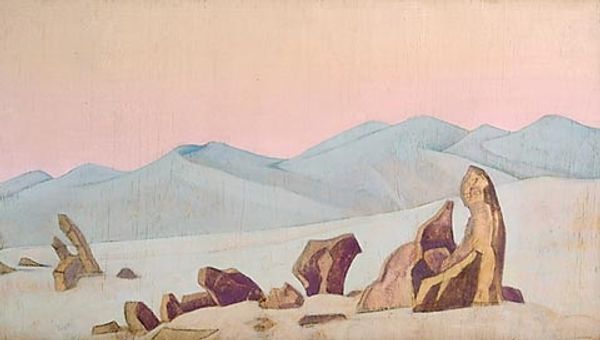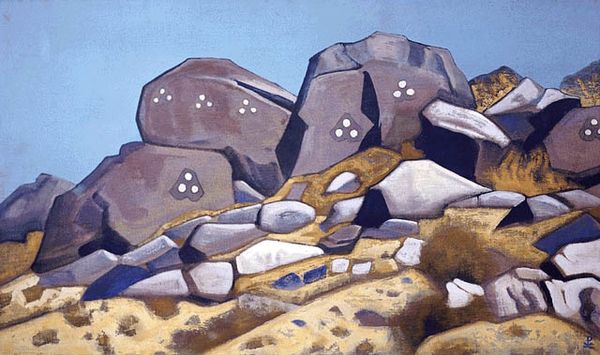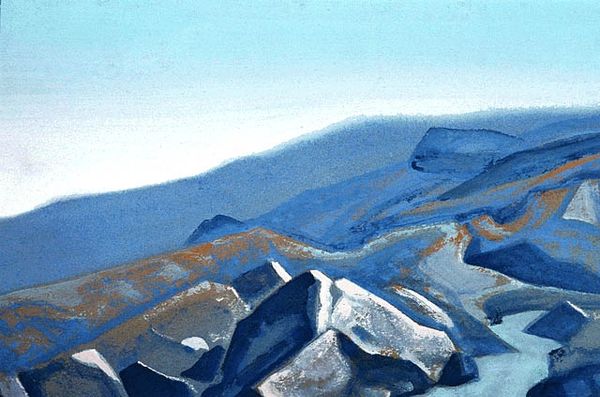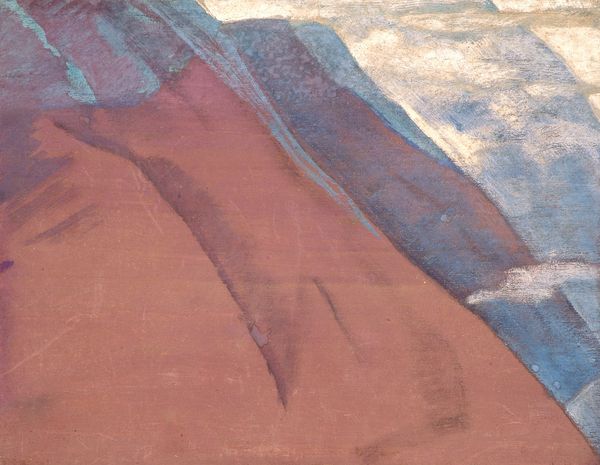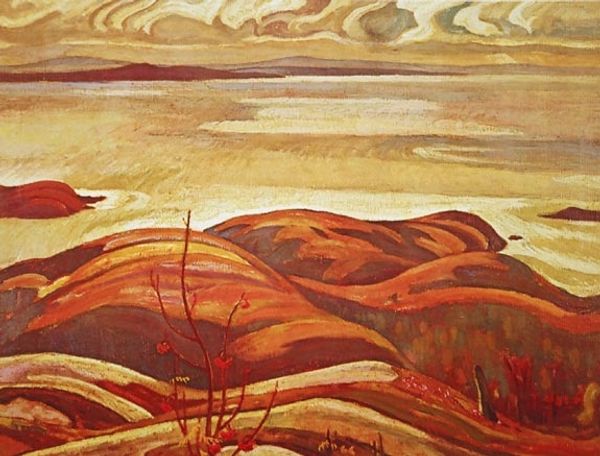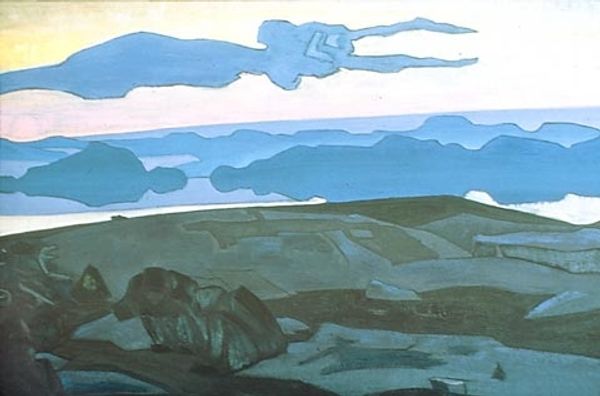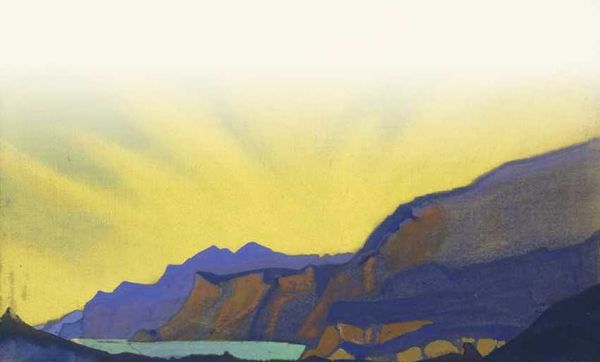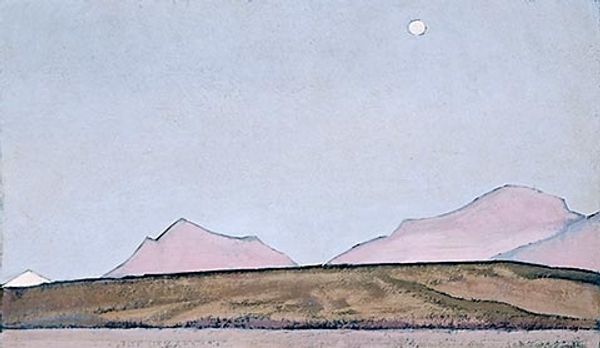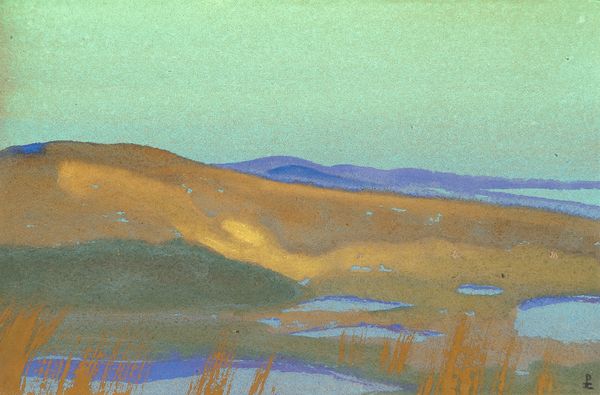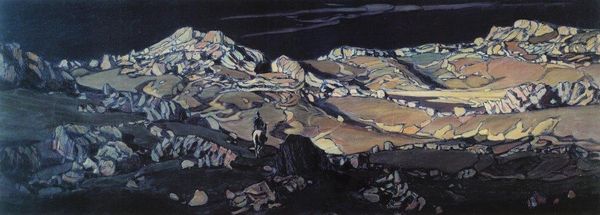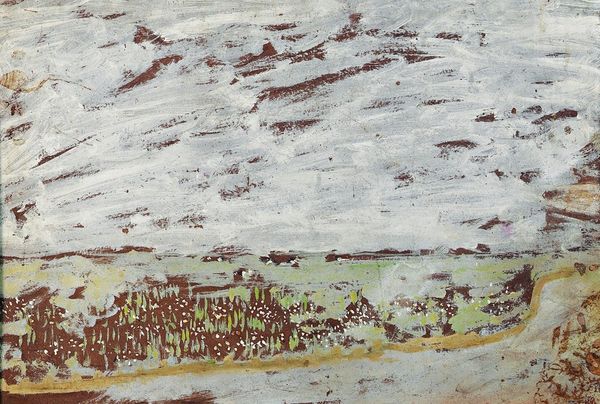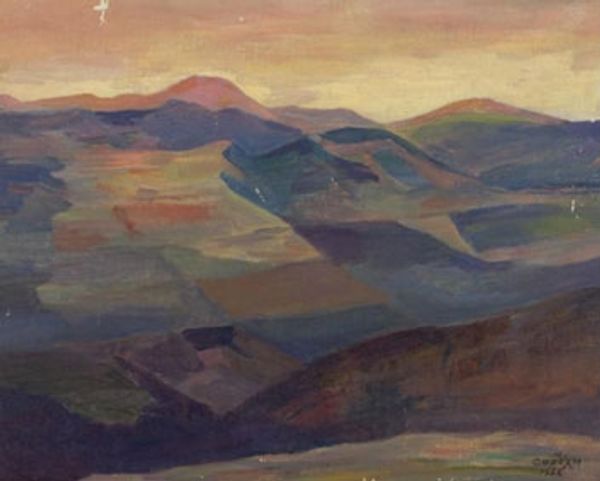
Copyright: Public domain
Editor: Korovin's "Murmansk Coast (Pomor Crosses)," created around 1900 using watercolor and possibly oil, presents a somewhat stark coastal landscape. I’m particularly struck by the muted colors and the looming presence of those crosses on the distant cliffs. It makes me wonder about the significance of that imagery within the Russian cultural context of the time. What draws your eye, and how do you interpret this work? Curator: My eye immediately goes to the crosses, as well. The prominence of these crosses in this stark, almost desolate landscape speaks volumes about the role of religion and spirituality within isolated communities, like the Pomors of the Murmansk coast. Remember, the late 19th and early 20th centuries in Russia were periods of significant social and political upheaval, alongside intense religious devotion. The choice of watercolor also subtly underscores this; it's a portable medium, suggestive perhaps of a fleeting, perhaps even outsider's perspective. What do you think this choice of medium communicates to a broader audience? Editor: I see your point. Watercolor, in this instance, perhaps softens what might otherwise be a harsher reality depicted in oils. So, Korovin, by capturing this scene in watercolor, is mediating it through his own artistic vision, one perhaps filtered through an impressionistic lens. Curator: Precisely. The artist isn't simply presenting the scene; he's actively shaping its reception. Consider too the absence of people. What does this absence convey about the Pomor community and their relationship to the landscape? Editor: I hadn’t considered that absence as such a powerful statement. Perhaps it’s highlighting their hardscrabble existence, a kind of resilience etched onto the land itself through those crosses. It also underscores a potential tension, a kind of visual gap between the harsh reality and the spiritual sustenance derived from faith. I never expected a landscape to be so…political. Curator: Indeed! Art so often serves as a mirror, reflecting the complexities of its time and challenging us to look closer at the power dynamics embedded within seemingly simple scenes.
Comments
No comments
Be the first to comment and join the conversation on the ultimate creative platform.
